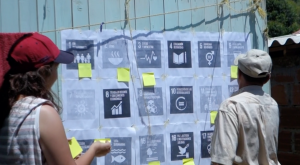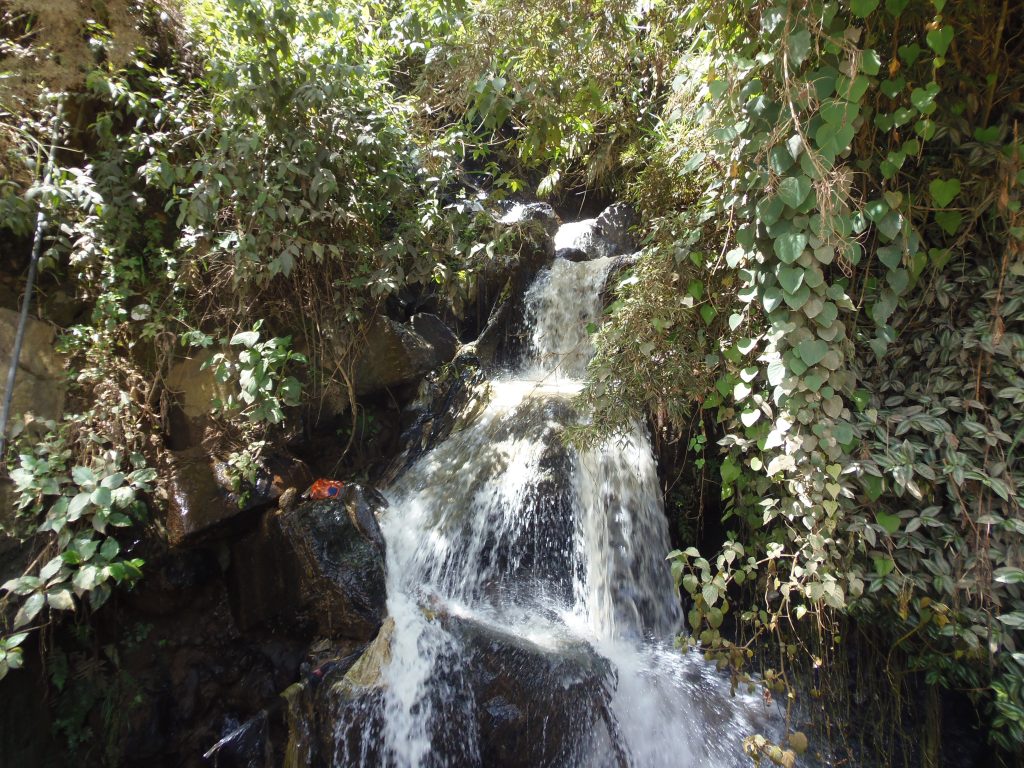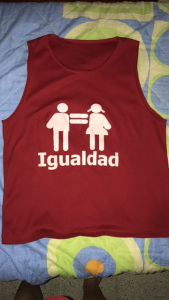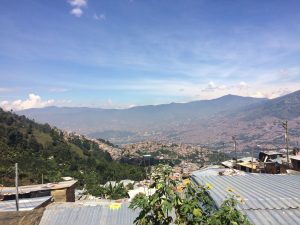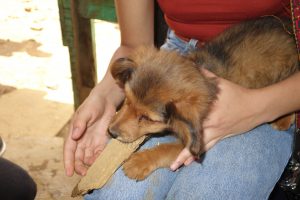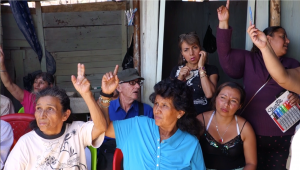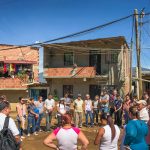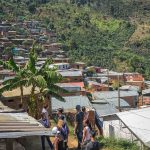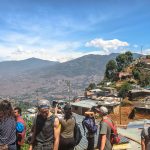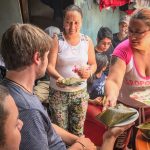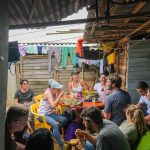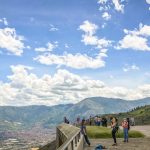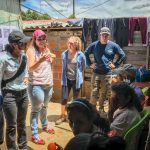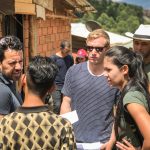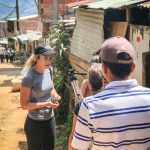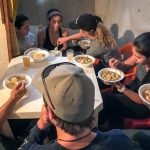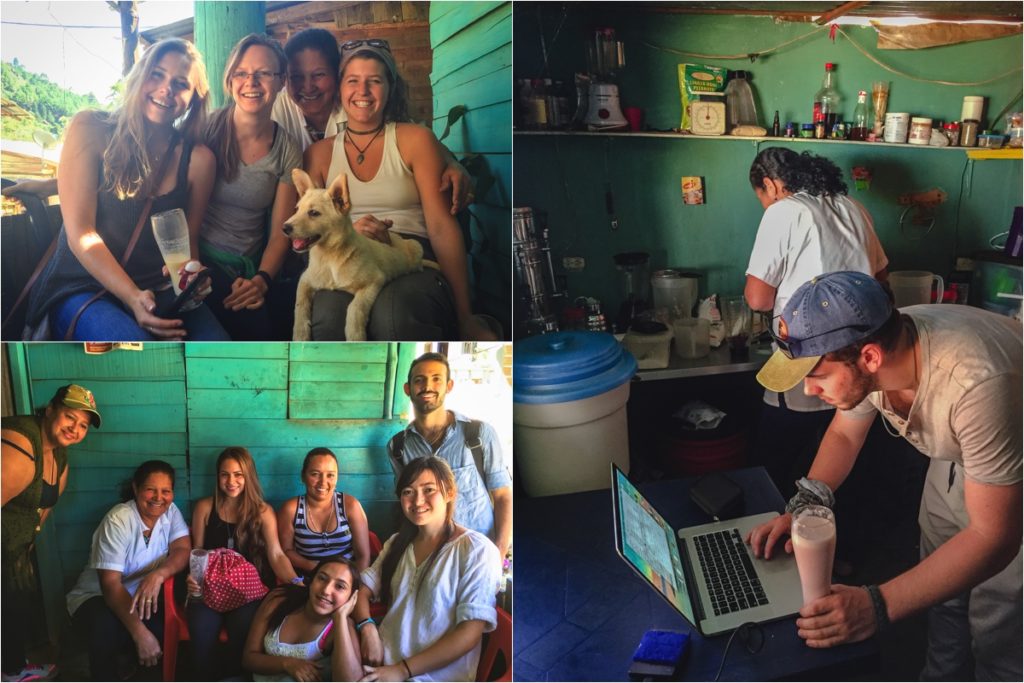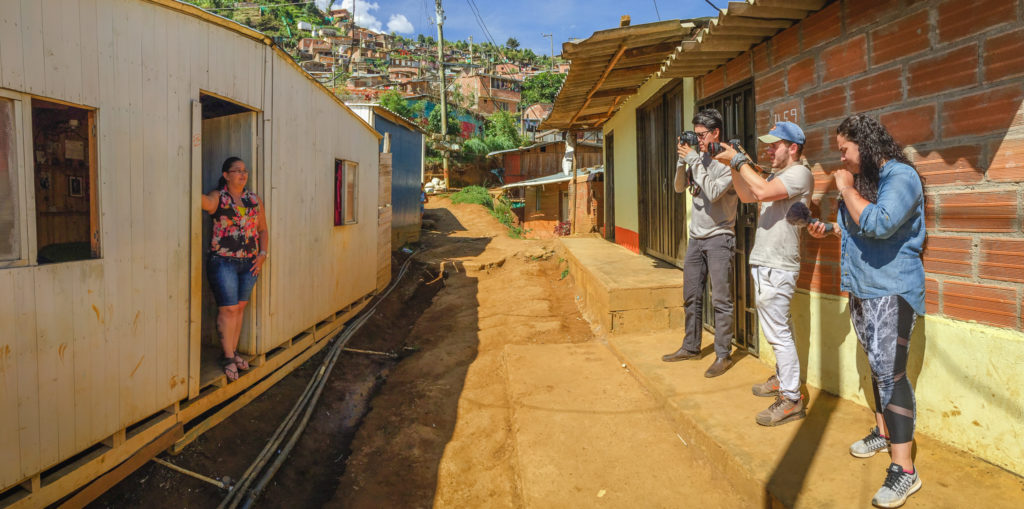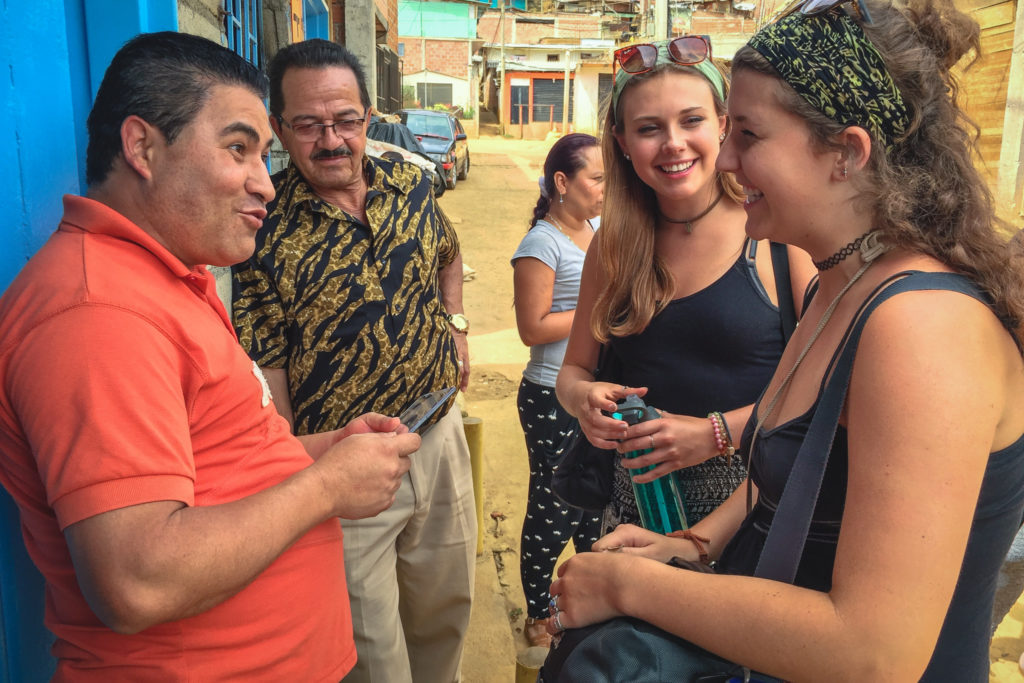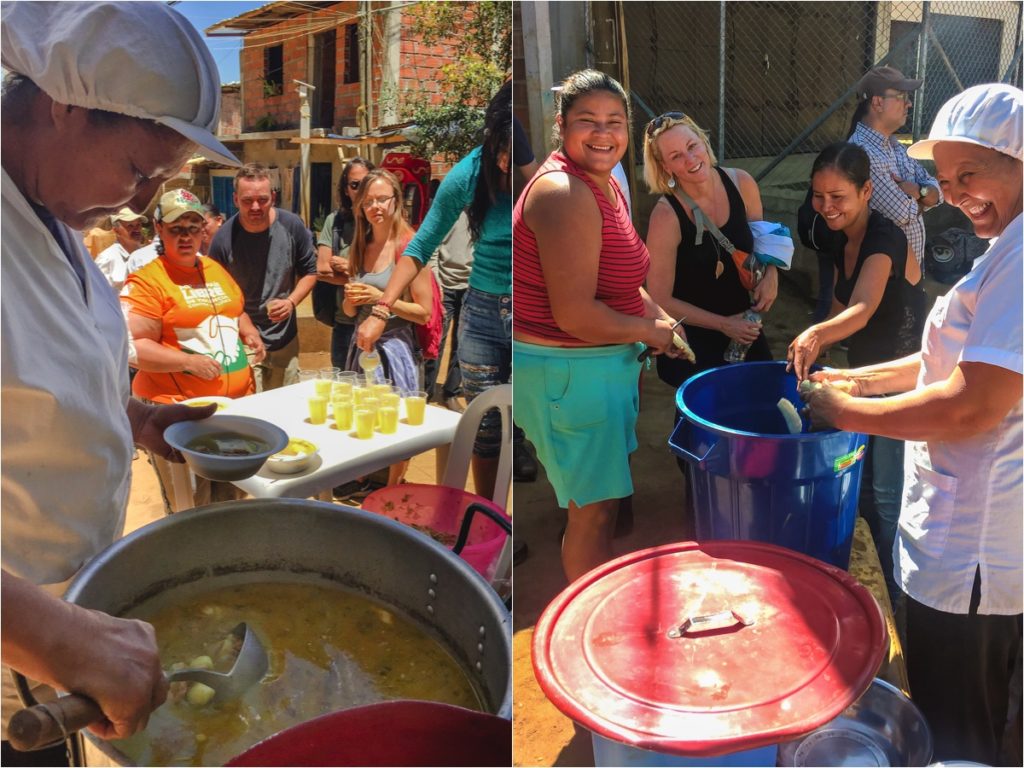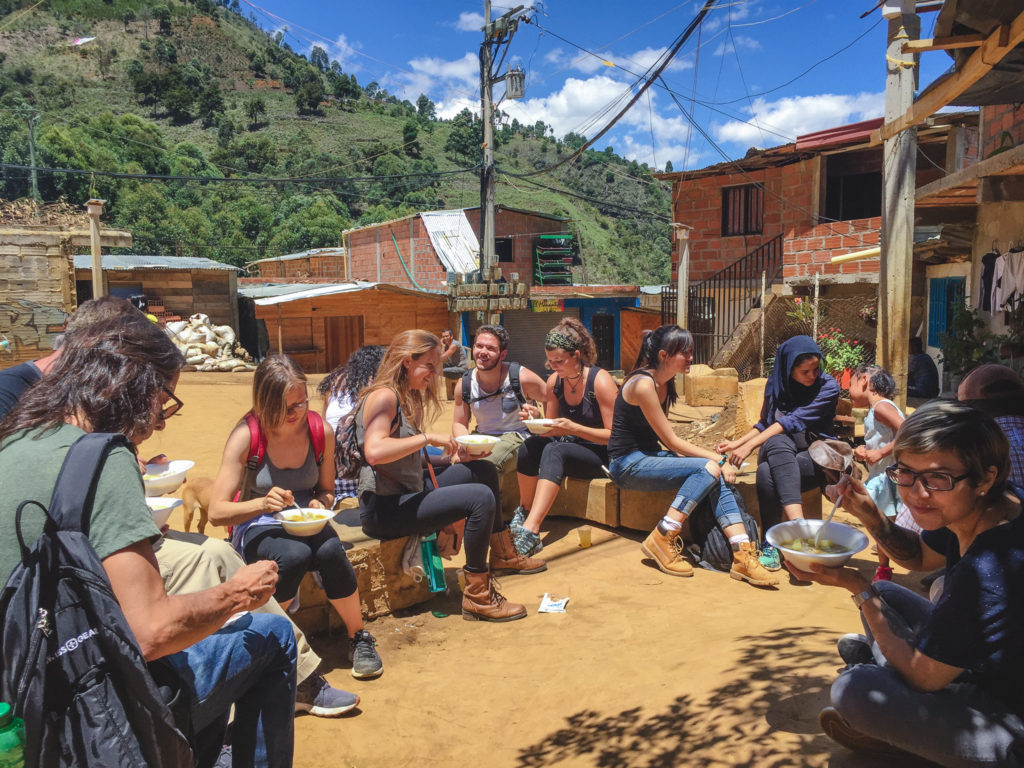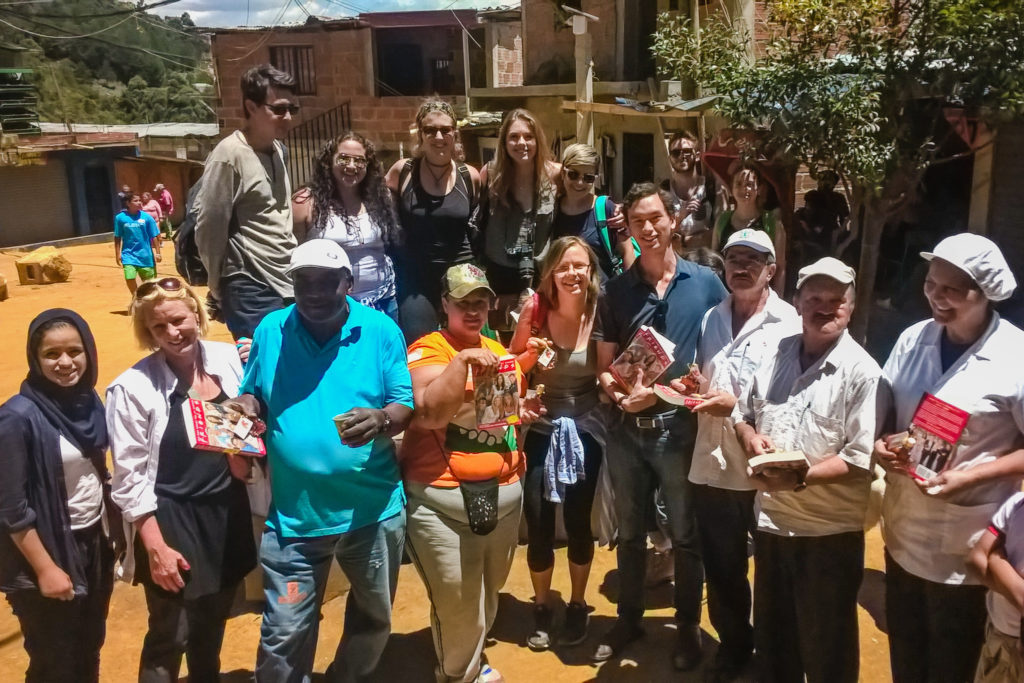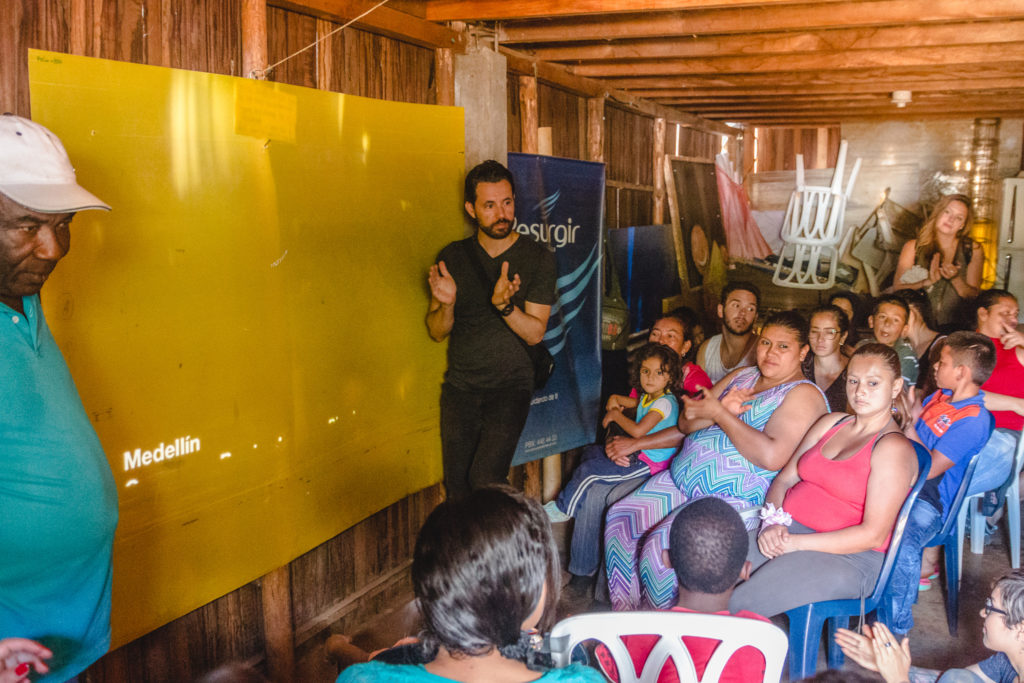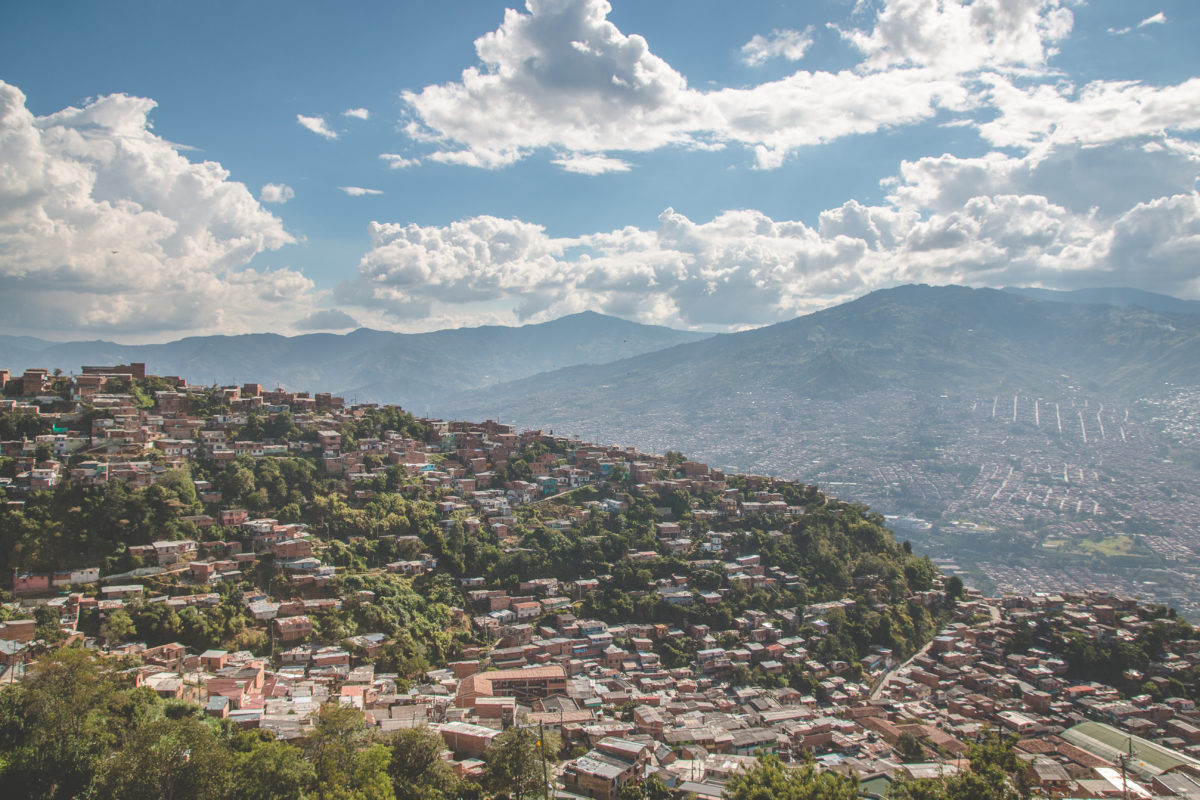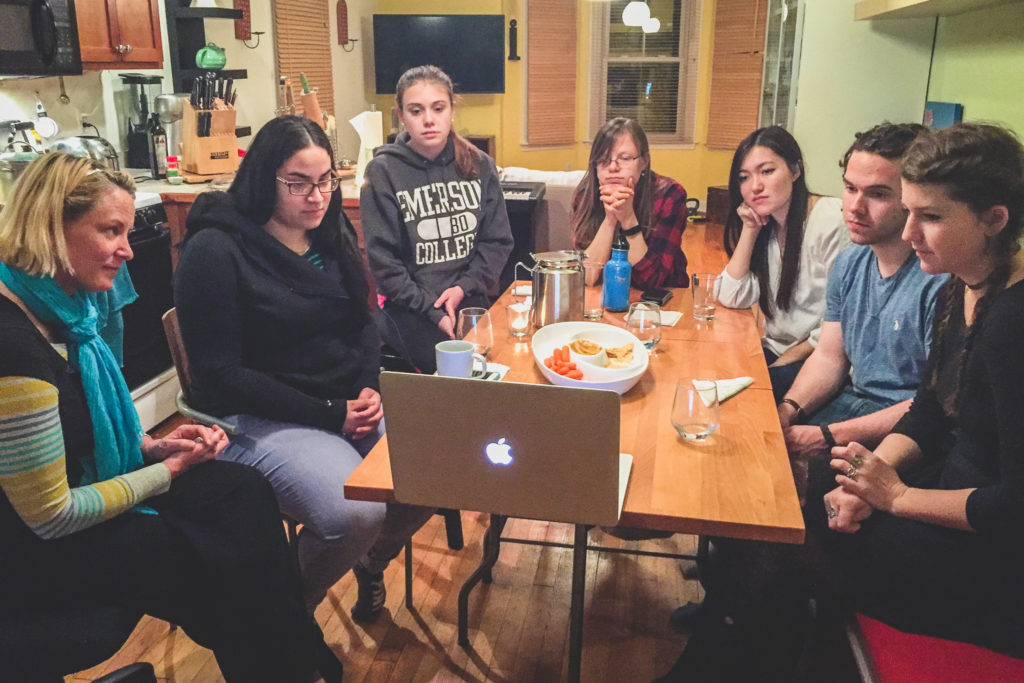In weekly workshops, Global Pathways Colombia students respond to academic articles and reflect on their experiences so far. We are publishing a selection of their reflections on this blog. This week, students were asked to reflect on two TED Talks that combine themes of storytelling and architecture:
•••
Maria Hernandez
“Why great architecture should tell a story” by Ole Scheeren
The way Ole Scheeren ties in storytelling and the projects he uses as case studies helps arise what I had subconsciously thought of in Manantiales. Before arriving there, I tried to dispel any prejudiced ideas of the barrio. I only thought that, since it was technically an informal settlement, the size of the neighborhood would be smaller than what it actually is. It was the only idea that I had that was debunked immediately. There are countless houses and structures in the neighborhood and even more people that inhabit them. Each house was very close to one another, the roads or alleys were very narrow and steep. Because of this, I thought of how close each community member’s story is intertwined with each other due to the lack of space. I internalized how Doña Ena’s house is a small, modest dwelling that can barely hold all of us inside as we enjoy an impromptu break and all the types of juice she makes; yet it is a hub of activity and cheerfulness. The closeness of this setting has inspired many conversations between the residents and the visitors. The stories that have been told (and are yet to be told) encompass and form a part of the structure that Doña Ena calls home.
Even if this physical closeness inspires a personal one as well, the community’s construction and layout prompt the stories of many residents to stay concentrated and (inevitably) unreachable for those who can’t go and hear them personally. Because of the difficulty of travelling to and from Manantiales for its residents, many outsiders are not aware of the multitude of stories that it possesses (whether those are from before arriving to the barrio or developed right at Manantiales). In addition, many of the residents’ capabilities of creating stories outside of Manantiales are physically limited. Scheeren says that when designing structures with other professionals, they must think of the experiences the inhabitants will have within the walls. If one were to look at a case and have to decide its fate without clear and proper observation, the task could be completely off-track.
A building has the capability of being a cold, hard structure that provides all of the services needed to cater to basic human needs; or it can be a space where warmth and amicability can be shared, alongside with being safe and comfortable. To see the distinction, people have to see the protagonists of the situation as not the bricks to create the next big building, but the people’s emotions and stories that will be created and expanded within these walls. When thinking of how to improve the physical structure of Manantiales, I lack the expertise to suggest ideas in architecture or planning. However, I see the many aspects to improve of the residents’ stories within the community. Along with attaining a better water supply system, I see the need in trying to foment more community closeness in finding (or creating) more space to congregate; and making it easier for the residents to be able to move to, from and around the neighborhood.
“My architectural philosophy? Bring the community into the process” by Alejandro Aravena
This video particularly made me think of my experience in our second visit to Manantiales de Paz. My role that day was to film a discussion among the community leaders of Manantiales that were discussing seventeen different points the United Nations established to improve living conditions in an area. The goal was to narrow down the ultimate goals the barrio needed to achieve in order to progress. Conducted by an architecture team, the discussion consisted of giving people three votes for the most vital disadvantages they had as a community as a whole. Alejandro Aravena describes in his TedTalk how participatory design (in theory) is a very beautiful way to convoke a community to personally express their specific needs; but, in practice, it is very difficult to address. The whole point of the discussion in Manantiales (much like the one Aravena conducted in Constitución, Chile) was not to find immediate solutions but to find the right questions. I didn’t realize this until well into the discussion.
During the first part of the voting, many people opted for peace, better education, end of poverty, among other goals. However, it was evident that establishing a final product was only the beginning. One of the community leaders (I truly wish I had recorded his introduction and included his name) spoke out and asked a question that turned the discussion around: “¿Cómo vamos a obtener el ‘fin de la pobreza’ (which was Point 1, and the one with the most votes at the moment) si no tenemos ‘trabajo decente y progreso económico’ (which was Point 8 and had fewer votes)?” If I remember correctly, he also asked how would it be possible to have good health without potable water? And how can they have potable water without money? His analysis of the problem was crucial to steering the conversation away from establishing what would be ideal to have, towards what exactly are the problems. With this Don’s questioning of the points it was clear (like Aravena says) that they had “to identify with precision what is the right question.” As outsiders coming into a community that has expanded beyond what could be conceived, it is very clear that one can come in with preconceived ideas of the problems they might have. It is very different hearing from not one but numerous people what are their circumstances and the possible roots and ramifications of their obstacles.
•••
Alec Oswald
Alejandro Aravena
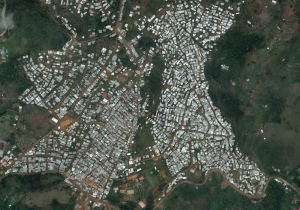 In 10 years, Manantiales has managed to grow into an 8000 plus person community. Their infrastructure and public amenities may be in poor condition and their safety and economic opportunity may be in question, yet the life force behind their achievements cannot be denied. They are among some of the most sustainable people in the world, conscious of every resource they use and when. No lights will be found left on in Manantiales and no cords left plugged in for needless reasons. No tap will run while one is shaving nor brushing one’s teeth. They are also an extremely entrepreneurial group of people. I have seen chefs, seamstresses, barbers, hair dressers, electronic repair and laundry machine rental services all offered out of the confines of one’s home. The home is not simply a place of respite, but a space that fosters ingenuity and creativity. These accomplishments and areas of improvement are tied together and provide tremendous opportunity. Right now, Manantiales does not have a dedicated physical space to gather. Without a home base, no community center, there is no easy way to politically or communally organize and realize actionable plans. But most of all, there is no easy way to “spring” towards the “peace” their very name defines. By facilitating what they are good at to improve in areas where they need help feels like common sense. Combining Alejandro Aravena’s idea of using the energy and power of the people to solve the housing crisis and providing a communication link where there would otherwise not be one, could prove to be a major stepping stone for Manantiales.
In 10 years, Manantiales has managed to grow into an 8000 plus person community. Their infrastructure and public amenities may be in poor condition and their safety and economic opportunity may be in question, yet the life force behind their achievements cannot be denied. They are among some of the most sustainable people in the world, conscious of every resource they use and when. No lights will be found left on in Manantiales and no cords left plugged in for needless reasons. No tap will run while one is shaving nor brushing one’s teeth. They are also an extremely entrepreneurial group of people. I have seen chefs, seamstresses, barbers, hair dressers, electronic repair and laundry machine rental services all offered out of the confines of one’s home. The home is not simply a place of respite, but a space that fosters ingenuity and creativity. These accomplishments and areas of improvement are tied together and provide tremendous opportunity. Right now, Manantiales does not have a dedicated physical space to gather. Without a home base, no community center, there is no easy way to politically or communally organize and realize actionable plans. But most of all, there is no easy way to “spring” towards the “peace” their very name defines. By facilitating what they are good at to improve in areas where they need help feels like common sense. Combining Alejandro Aravena’s idea of using the energy and power of the people to solve the housing crisis and providing a communication link where there would otherwise not be one, could prove to be a major stepping stone for Manantiales.
Ole Scheeren — My professor Jota’s reactions to the changes he sees in one year’s time is a reoccurrence on my trips to Manantiales, though one that I myself cannot perceive, is one that I can feel. People have upgraded their homes, public spaces have taken new shape and the neighborhood is ever expanding. It is a sign of hope because while many are on the brink of survival, many are progressing. Ole Scheeren’s idea of architecture as an organism that can and needs to tell the stories and experiences of its users is an invaluable concept for the doble dezpladados (double displaced). As the neighborhood is ever changing, how does its form allow its stories to be remembered. Twenty, thirty years from now, how will Doña Ena’s food and juice business be remembered? How will the invasion be remembered? My fear is that the layered history of Manantiales will be forgotten and forsaken in its rapid urbanization.
It is important here to note, that before my 5-week experience in Medellín, I spent 6 weeks on a study abroad program in Rome. An elective course, the Layers and History of Rome, had me walking through the city 6 hours a day, learning the city’s 2,000-year-old history through its architecture. A single church can feature a column from the days of the empire, another from the renaissance, attached to the portico of a modern building and all built on the foundation of a building from the Roman Republic. Compare this to a 10-year-old informal community, a house that began as wood, grows into brick, is sometimes covered with a thin layer of concrete and eventually painted over like the evolution of a cocoon. Architecture can tell stories.
While I commend the story telling powers of art and media, I wonder, can architecture tell a better story or provide the foundation for these other outlets to tell a truer one? Instead, one’s historical and cultural knowledge of Manantiales should be invigorated and reinforced every time one gazes upon its public buildings and infrastructure projects. When form follows fiction.
•••
Mara Congour
These TED Talk videos send waves of electricity through me just like the cold showers I have been taking for the last four weeks. Not only are they an excellent wake-up call, but they push me out of my nest of mental slumber and complacency and into a world of possibility. The way that both Ole Scheeren and Alejandro Aravena spoke about the power of design reminded me of why I want to be an architect. I believe that design, though it is not the sole driver for changing the world, does provide a good stage for doing so. Design is the building block of our everyday lives; it is in every building we set foot in, every bench we rest on, and every taxi door that we accidentally slam. Without good design, life suddenly becomes a lot less functional. A disconnected, poorly labeled street network confuses its users, a playground with shoddy equipment discourages family usage and interaction, and a museum with a small, decrepit entrance does not invite in the audience its art deserves. People are not encouraged to come and gather around tables and benches and hang out with their friends if they are uncomfortable and in an unwelcoming atmosphere. Concrete buildings and streets that provide nothing but chewed gum and “NO LOITERING” signs encourage hiding in homes and create roadblocks for friendship.
This is why thoughtful, well-informed design is so important to our society. Good design invites the mingling of people and their environment. It is both utilitarian and creative. It can function on different scales in or for different places with different cultures. Good design garners a specific, desired reaction or series of reactions. It can fuel exploration or relaxation, provoke deep thought or excitement. This is why I believe that the design of the community space is of dire importance to the functionality of not only a community, but society as a whole. If the community space does not have pleasant hubs for people to mingle in, the community may not interact as much. Lack of mingling often means an increase in isolation. When people do not know their neighbors, they may become suspicious and untrusting of their behavior, which can lead to issues down the road. I am not saying that this is a set phenomenon and that this will always happen, but rather it is less likely to happen if the community has a good space to gather in.
As a future architect I wish to construct spaces that allow communities to construct themselves. I thought that the vertical village in Singapore, aka The Interlace was an excellent approach to this. It turned traditional, concrete block architecture onto its side (literally) and in doing so, created an amazing hive of potential. Balconies and large windows invite people to be outside and either watch or become a part of the social activities taking place. People are given places to gather and interact with each other, giving them the opportunity to build strong bonds and create a sense of community. A simple bench can provide the perfect setting for a friendship in the making. However, there is a difference between putting a bench along the edge of a highway, versus putting the same one in the middle of Central Park. Creating a setting is more than the placement of objects. It is creating interactions between objects and their users.
Good design also relies deeply on the connection between the architect and the client. When the architect does not see eye to eye with the client, Pruitt-Igoes are born. For those who know not what Pruitt-Igoe is, look back into the 1960’s and early 70’s on US soil. Now imagine an under-budgeted, under maintained mass-housing project designed for black families in racist St. Louis Missouri. The housing did not fit the needs of the community, isolating them to degrading towers and separating them from the life of the street below. You get the gist of it. And also why it was torn down.
The architect must know the client that they work for, and be able to understand them. The bonds that we are making now with the people of Manantiales have strong determinate factors in the outcome of our project. I hope that these bonds will allow us to serve the community in the best way possible, and to help create a stronger community whilst improving their health, safety and education. Form can follow function as much as it wants to, but I think Ole Scheeran had the right of it when he said that form should follow fiction. Utilitarianism only works to a certain extent. You must think about whether you want the bench that you design to be a mere seat or a platform for community building.

